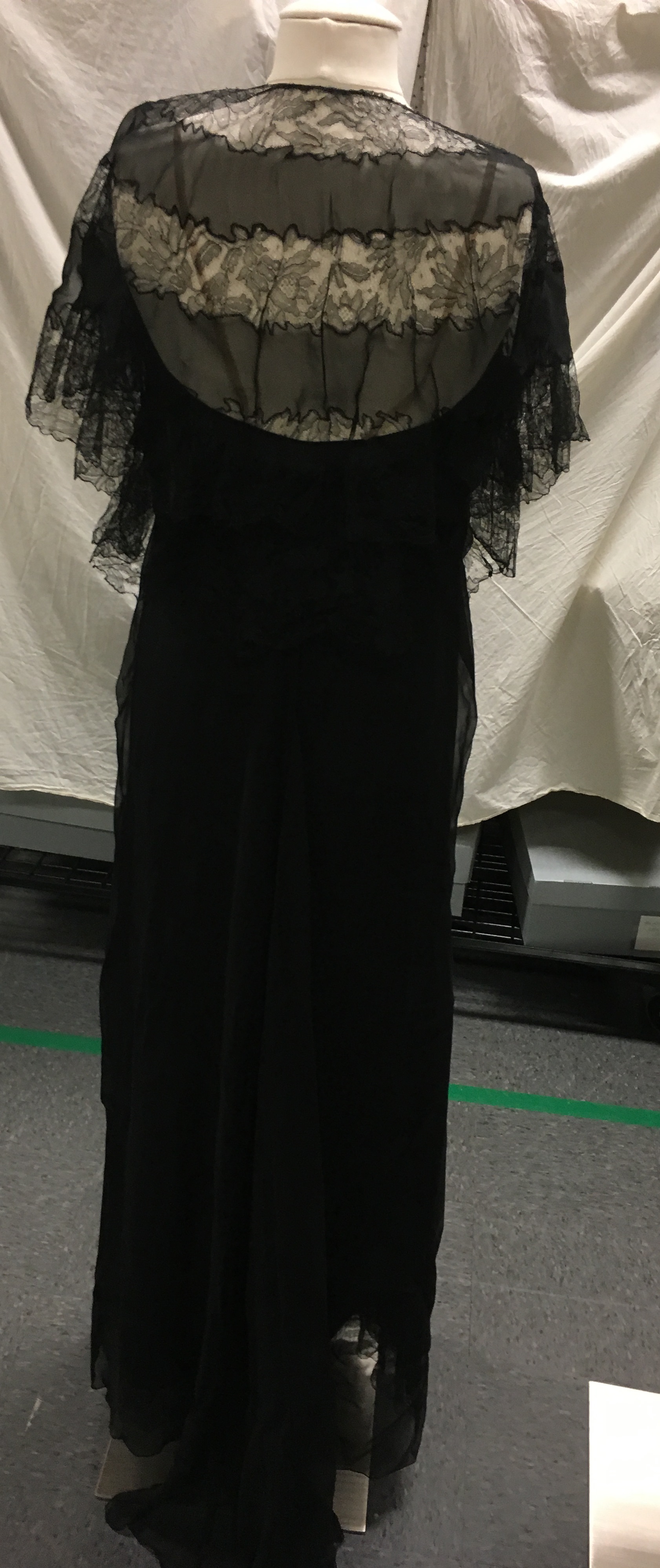The Letty Lynton Effect
Throughout the history of film, there have been dresses that have become iconic, nearly eclipsing the film in which they were worn; Marilyn Monroe's white halter dress in The Seven Year Itch, Audrey Hepburn's black gown in Breakfast at Tiffany's, and Molly Ringwald's pink floral dress in Pretty in Pink are all examples of this phenomenon. These Hollywood styles became so famous and in such high demand that designers and manufacturers often copied or mimicked the look for the masses. In the 1930's the iconic dress was white mousseline de soie, ruffled, and worn by Joan Crawford in Letty Lynton.
|
Joan Crawford in her iconic white gown in Letty Lynton (1932) |
The dress, created by Gilbert Adrian specifically for the movie, became so popular that Macy's in New York is said to have sold half a million copies. Diaphanous gowns with ruffles and frills quickly gained popularity, with emphasized shoulders and romantic flounces. The Fashion Archives at the Maryland Historical Society has a few gowns that illustrate the “Letty Lynton effect,” including the 1935 gown below.
 |
 |
 |
1976.8.1 Gift of Mrs. Campbell Lloyd Stirling (Amelia Prescott Allison)
While not white like Joan Crawford's gown, this dress and the attached slip would have been a matching light blue when it was worn in 1935. The dye on the lace has since faded, and the slip has discolored to shades pink and yellow from light exposure and dye instability, but unexposed thread and fabric retain the original color. The influence of the Letty Lynton dress is certainly present- the sleeves of the dress are formed from the layers of lace ruffles and are gathered at the shoulder to give extra volume. The effect is carried through the skirt where triangles of lace give an almost mermaid train to the otherwise formfitting dress.
While Adrian's gown is widely credited with starting this trend of romanticism in the 1930s, there may have been other influencing factors. As the 1920's ended, hemlines dropped to the floor and beaded sheaths were given up for fluid, form-fitting gowns cut on the bias to hug every curve. An example of this style is seen below.
 |
 |
These gowns were shiny, silky, and sexy with long lines and very low backs. The problem was that the fluid fabric would hug every curve- including those you'd rather not show. Even with foundation garments, not every woman would be flattered squeezing into an unforgiving satin sheath that provided no bust support.
To these women and many others, the Letty Lynton gown provided a pretty relief. Dresses that combined the new trend with the Hollywood glamour featured a layer or more of lace or chiffon over the clingy sheath disguised the body's flaws (see below). These could be zipped or snapped tightly to the body and the plunging back maintained, flattering the figure while muting the shiny sheath underneath. The exaggerated shoulders not only drew attention to the face of the wearer, but also made the waist appear smaller.
 |
 |
Some women preferred the Letty Lynton style as it had a more youthful look. It was also considered more appropriate for evening wear for young, unmarried women than a clingy gown. The light blue dress was worn Amelia Prescott Allison to the Bachelors Cotillion, an occasion at which the sinuous satin gown would have been inappropriate.
There was also an eagerness to return to the romanticism that was abandoned in the 1920's. This desire, paired with the growing power of Hollywood in influencing fashion trends created the perfect climate for Adrian's gown. When the film debuted in 1932, Joan Crawford's white gown became instantly famous, and the Letty Lynton effect swept the nation, establishing it as one of the most iconic dresses in film history.
 Joan Crawford in Lettly Lynton Joan Crawford in Lettly Lynton |
New Call-to-action
References:
Mendes, V. and De La Haye, A. 20th Century Fashion (1999).


